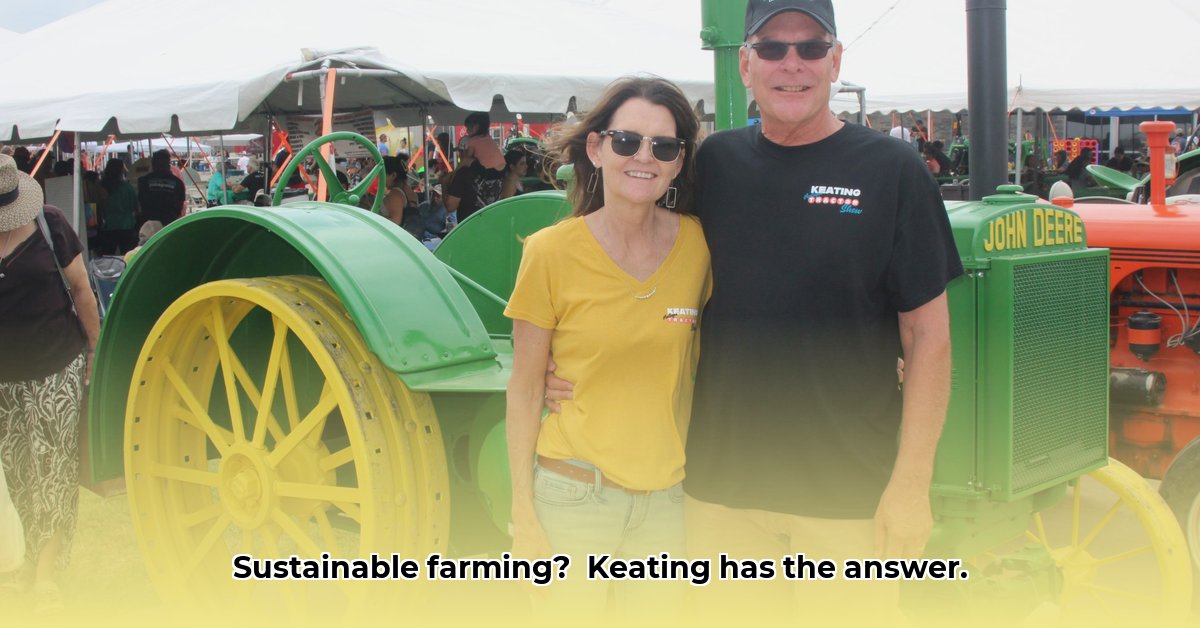
Keating Tractor and Sustainable Agriculture: A Data-Driven Analysis
Keating Tractor, a long-standing John Deere dealership, has been serving farmers for over 60 years. This longevity suggests a commitment to quality and customer satisfaction. However, a comprehensive assessment of their contribution to sustainable agriculture requires a deeper dive beyond anecdotal evidence. For more on tractor uses in agriculture, see this helpful resource. This analysis explores Keating's current role and identifies actionable steps for improvement. The primary goal is to provide an objective evaluation and offer concrete recommendations for various stakeholders, including Keating Tractor itself, farmers, and governing bodies.
Indirect Contributions: Durability and Resource Efficiency
One potential indirect contribution to sustainability stems from Keating Tractor's focus on durable equipment. Longer-lasting machinery inherently reduces waste by minimizing the need for frequent replacements. This aligns with principles of circular economy and resource efficiency. Furthermore, their involvement in the used equipment market further extends the life cycle of their machinery. However, simply selling durable machines isn't sufficient for claiming leadership in sustainable agriculture; quantifiable data on overall environmental impact is crucial.
Transparency Gap: The Need for Concrete Metrics
Currently, a significant challenge lies in the lack of transparent, publicly available data regarding Keating Tractor's environmental footprint. Key information is missing concerning their contribution to reduced greenhouse gas emissions, water conservation, and the promotion of regenerative farming techniques. This data gap hinders a complete and objective assessment of their actual environmental impact. To gauge their true contribution, concrete metrics are essential. For example, what is the average fuel efficiency of tractors serviced by Keating, and how does this compare to industry averages? What is the carbon footprint associated with their operations, from manufacturing to disposal?
Actionable Steps for a Greener Future
To enhance their sustainability profile and contribute meaningfully to a greener future, Keating Tractor and its stakeholders need to collaborate and implement concrete actions.
Actionable Steps for Keating Tractor:
- Conduct a Comprehensive Life Cycle Assessment (LCA): Commission an independent LCA of their equipment, encompassing all stages from manufacturing to disposal. This assessment should quantify greenhouse gas emissions, water usage, and waste generation. A transparent report should be publicly available.
- Develop and Publish a Detailed Sustainability Plan: Set clear, measurable, achievable, relevant, and time-bound (SMART) goals for reducing their environmental footprint, with specific targets for emissions, water consumption, and waste reduction. Regular progress reports should be published to ensure accountability.
- Partner with Environmental Organizations and Researchers: Collaborate with independent researchers and environmental groups to validate their sustainability claims and identify further opportunities for improvement. This collaborative approach can broaden perspectives and provide valuable expertise.
Actionable Steps for Farmers:
- Optimize Equipment Usage: Implement precision agriculture techniques to maximize the efficiency of their equipment, minimizing fuel consumption, fertilizer use, and pesticide application. This approach can significantly reduce their environmental impact.
- Prioritize Sustainable Practices: When purchasing or leasing equipment, farmers should prioritize models with demonstrably lower environmental footprints and consider the long-term sustainability implications of their choices.
Actionable Steps for Government Agencies and Policy Makers:
- Develop Incentive Programs: Governments should implement policies that incentivize the adoption of sustainable agricultural equipment and practices, such as tax breaks or subsidies for environmentally friendly machinery.
- Fund Research and Development: Invest in research and development to accelerate innovation in sustainable agricultural technologies. This includes advancements that improve fuel efficiency, reduce emissions, and conserve resources.
Actionable Steps for Environmental Organizations:
- Engage in Open Dialogue: Initiate constructive dialogue with Keating Tractor to encourage transparency and collaboration on sustainability initiatives. This partnership can foster positive change and help establish industry benchmarks.
- Support Independent Research: Funding and promoting independent research on the environmental impact of agricultural equipment can provide objective data and inform policy decisions.
Measuring Progress: Key Performance Indicators (KPIs)
To effectively track progress towards sustainable agriculture, a robust set of KPIs is necessary. The following KPIs provide a framework for evaluating Keating Tractor's and the wider agricultural community’s contributions:
| KPI Category | KPI | Target (Example) | Measurement Method |
|---|---|---|---|
| Greenhouse Gas Emissions | CO2e emissions per acre of cultivated land | -20% in 5 years | Life cycle assessment, field measurements |
| Water Consumption | Water used per acre of cultivated land | -15% in 3 years | Field monitoring, farm management software |
| Soil Health | Soil organic carbon content increase | +10% in 5 years | Soil sampling and analysis |
| Equipment Lifespan | Average operational lifespan of Keating tractors | +10% increase in 5yrs | Maintenance records, customer surveys |
| Waste Reduction | Amount of tractor waste sent to landfills | -25% in 5 years | Waste tracking and management systems |
By focusing on these measurable indicators and fostering collaboration among all stakeholders, a more sustainable future for agriculture can be achieved. Keating Tractor's potential to contribute meaningfully to sustainability hinges on improved transparency and proactive engagement with the broader agricultural community.